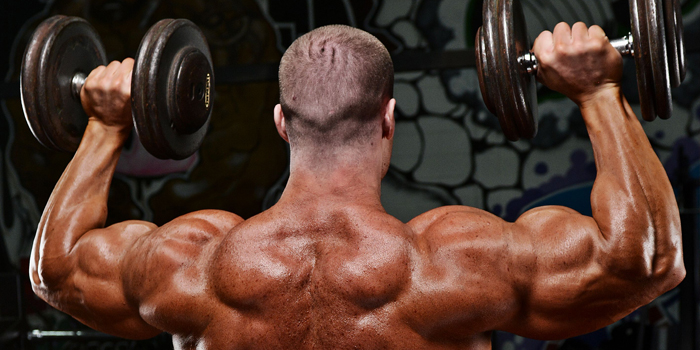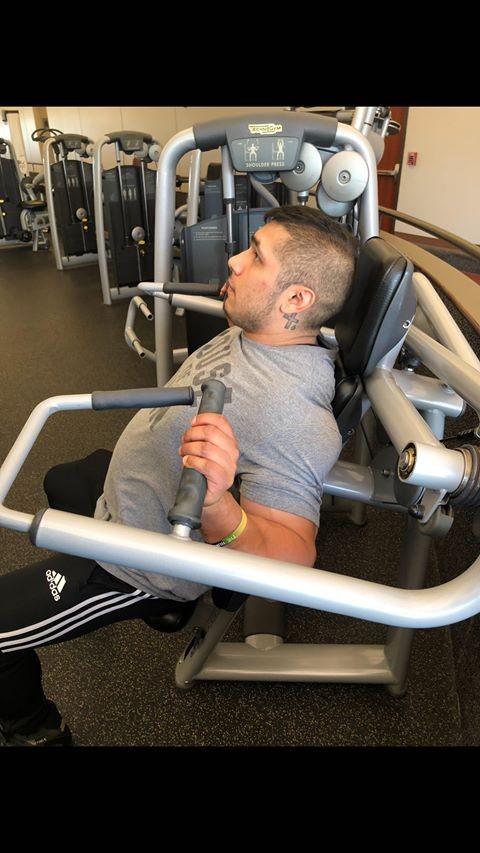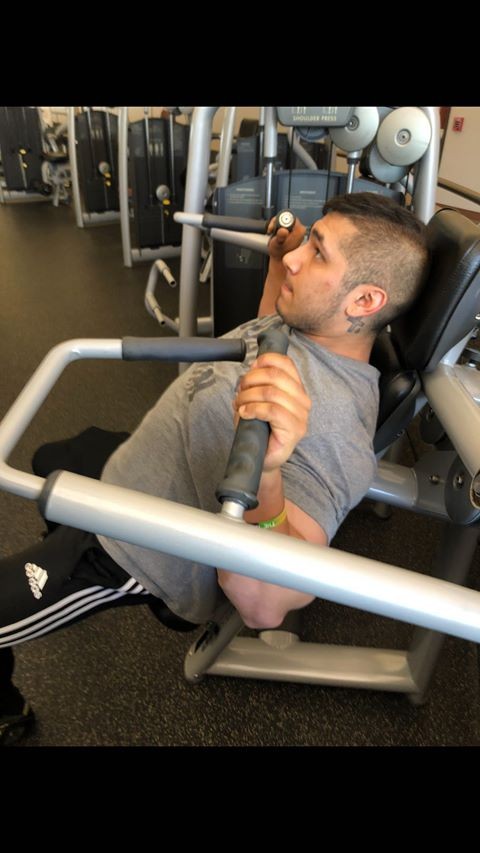
Recently, I posted a video of one of my main shoulder training movements for this offseason: a cage press from pins.
In that post, I explained my goal with this movement: to allow me to press overhead without shoulder pain. However, I didn't really understand why I could press this way until Paul Carter explained. With his permission, I'm sharing that info here, because I believe it's applicable to most or all lifters and overhead movements.
Paul Carter on Internal vs. External Rotation and Pressing Overhead
The reason why this press is easier on the shoulders is because that grip is naturally going to put you into your active range for pressing. Most presses have people initiating the press from an internally rotated position. So they start the press initiating with the shoulder in a really horrible position to load it.
This is the typical starting position for a press for many lifters, showing internal rotation due to poor shoulder mobility:

Here's the same lifter, but this time, he's positioned farther forward on the seat:

See how the wrist, elbow, and shoulder are all aligned? This is his ideal setup for his structure and mobility.
So, pressing into the rack allows me to work around my own poor mobility by stabilizing the bar in front of my body, rather than directly overhead.
My Takeaways
The best info is useless if you don't have a plan to act upon it. Here's my plan for incorporating Paul's advice into my training:
- Improve my shoulder mobility by including more rotator cuff work, dynamic stretching, and full range-of-motion exercises.<.li>
- Substitute 90-degree strict seated pressing with a high incline (~75 degree) press until my shoulder mobility is sufficient.
- Avoid any pressing machines that force me into an internally rotated shoulder position.
If you haven't already, be sure to give Paul a follow on his Instagram page, where he regularly shares great info like this:








